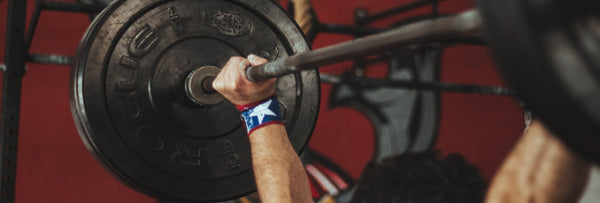Posted on 19 March 2018


When you get into CrossFit for the first time, you'll notice a few things: how incredibly fit you get in a short amount of time, what a steep learning curve there is (AMRAP WODs, anyone?), how strong the community is and how the topic of injuries is never far away from your fellow athletes' minds.
The fact is at some point in your training career you are likely to suffer from a CrossFit injury and need to undergo a gym recovery period. Depending on the nature of your injury, this recovery period could be simply a day or two or a more prolonged period of time. So what is the trick if you do suffer from a WOD gone wrong? Speak to your coach and any physio or sports therapist that might be operating from or in partnership with your box for some urgent advice. Many common problems can be tackled with the RICE method (rest, ice, compression, elevation – not eating rice), that and some quality post-workout stretches to mobilise fully before cooling down.
Without further ado, let's take a look at some of the most common injuries in this fitness craze and how you can avoid them.
Torn Hands
Whether you're developing through banded pull-ups or progressing straight to muscle-ups, the bar will invariably leave you with torn hands at some point. The combination of sweaty palms, challenging movements and the adrenaline that kicks in during a WOD means that it's all too easy to ignore the mounting pain in your palms and let calluses suddenly tear. These are the calluses that you will naturally build through working with kettlebells, bars and other forms of iron.
They are the body's response to what you’re doing, and designed to protect your hands, but the swinging motion can easily cause a tear when your hands get hot and sweaty. The solution? Ensure good technique as the first approach and, secondly, look after your calluses by keeping your hands thoroughly moisturised and filing away any excess ones that rise above the skin. Yes, it's a bit gruesome, but unfortunately, although the rest of you will look increasingly amazing, as you train ever harder, your hands will never be truly beautiful again.
Some athletes will also use chalk dust to keep their hands as dry as possible, while others will use gloves. However, coaches tend not to recommend gloves as they make it difficult to grab the bar and to get your technique right on one of the most challenging bodyweight exercises that exist.
Most importantly, focus on technique. Start with your kipping pull-ups, attend supplementary gymnastics classes, always engage your core and keep practising without overdoing it. And above all else, wear your war wounds with pride!

Lower Back Pain
This can occur if you are lifting heavy weights with poor technique and not fully engaging your core or standing with good posture. Get advice from your lifting coach and stop lifting whenever you feel your back complaining. The same goes for heavy kettlebell swings, dumbbell work, handstand tekkers or anything else that causes a twinge. Stop, mobilise and seek the advice of your coach immediately. They will probably prescribe an alternative, scaled version to the exercise that you are doing, as well as mobility work, stretching or simply rest.
Anterior Knee Pain
Knees can come under strain from running and gassy WODs, particularly where box jumps are involved and if techniques aren't being done properly (think 'spring like a cat' rather than 'thud onto the box'.) Knee pain can also occur if you are over-training. Don't train for more than three days in a row without a rest day.
Remember, overuse of your body without rest will cause serious injury over time. If you have minor pain, try icing your knee, stretching to keep limber and scaling the skill and WOD elements accordingly. Ideally, take a few days off (we know, it’s hard. Dedication and whatnot. But remember, your fitness passion should sustain you for a lifetime, not see you injured and out of action.

Tendonitis
This can occur in your achilles or in your shoulders’ rotator cuffs. Either way, the pain and inflammation tend to be down to overdoing things before you are ready. Weightlifting can be a particular stressor when you are new to the sport, so focus on your technique and lay off the bumper plates for a while.
Again, your coach will tell you to ice the affected area, rest and scale the workouts accordingly. Always speak to your coach as they will have seen every injury imaginable and can give you good advice that keeps you functional, fit and constantly improving for the long run.
Technique, Technique, Technique
Above all, train with excellent technique and listen to everything your coach is telling you, especially when it comes to the more technical barbell lifts or gymnastic movements. Forget going heavy until you know what you're doing and never add on heavier bumper plates or lift a heavier kettlebell if you are advised not to.
The sport is challenging and complex at times, but there is scope for everyone to scale according to their existing ability level. Never let an ego get in the way of steady progress, or injury will tend to occur. And listen to your coach. Failure to follow advice from your qualified professional box owner is ultimately one of the biggest causes of injury whilst WOD-ing and it’s easily avoided by following one of the first rules of this fitness craze: leave your ego at the door!
For more tips on muscle recovery and DOMS, check out our blog: Delayed Onset Muscle Soreness (DOMS) Explained.

0 comments